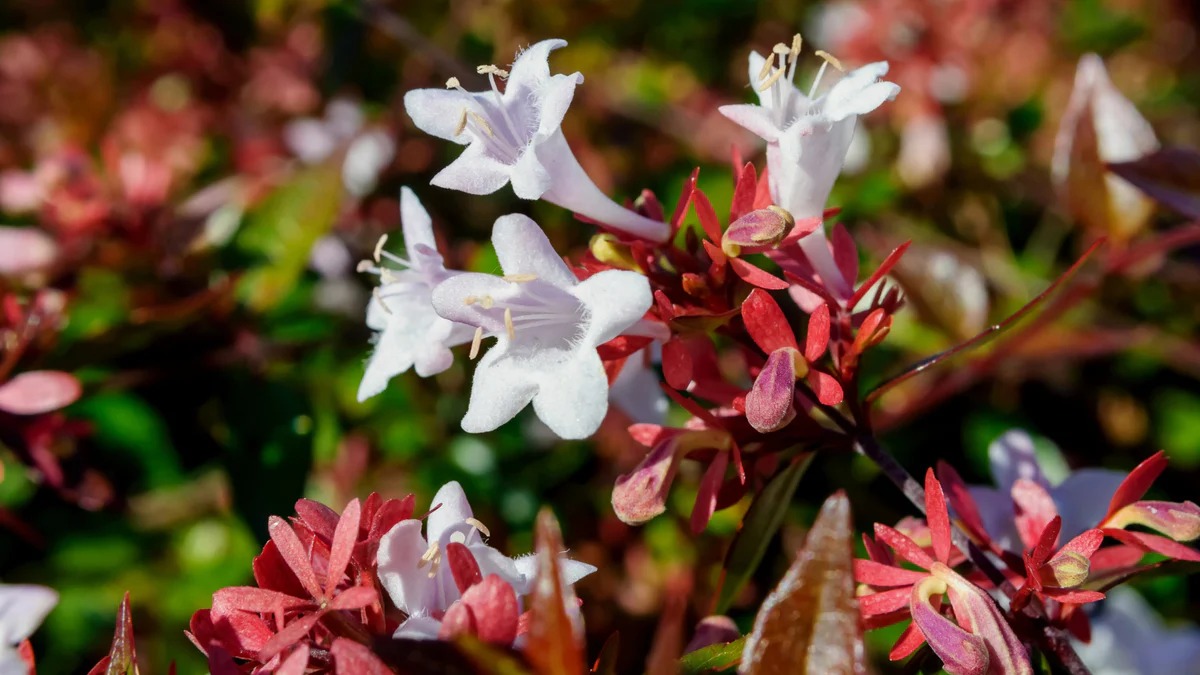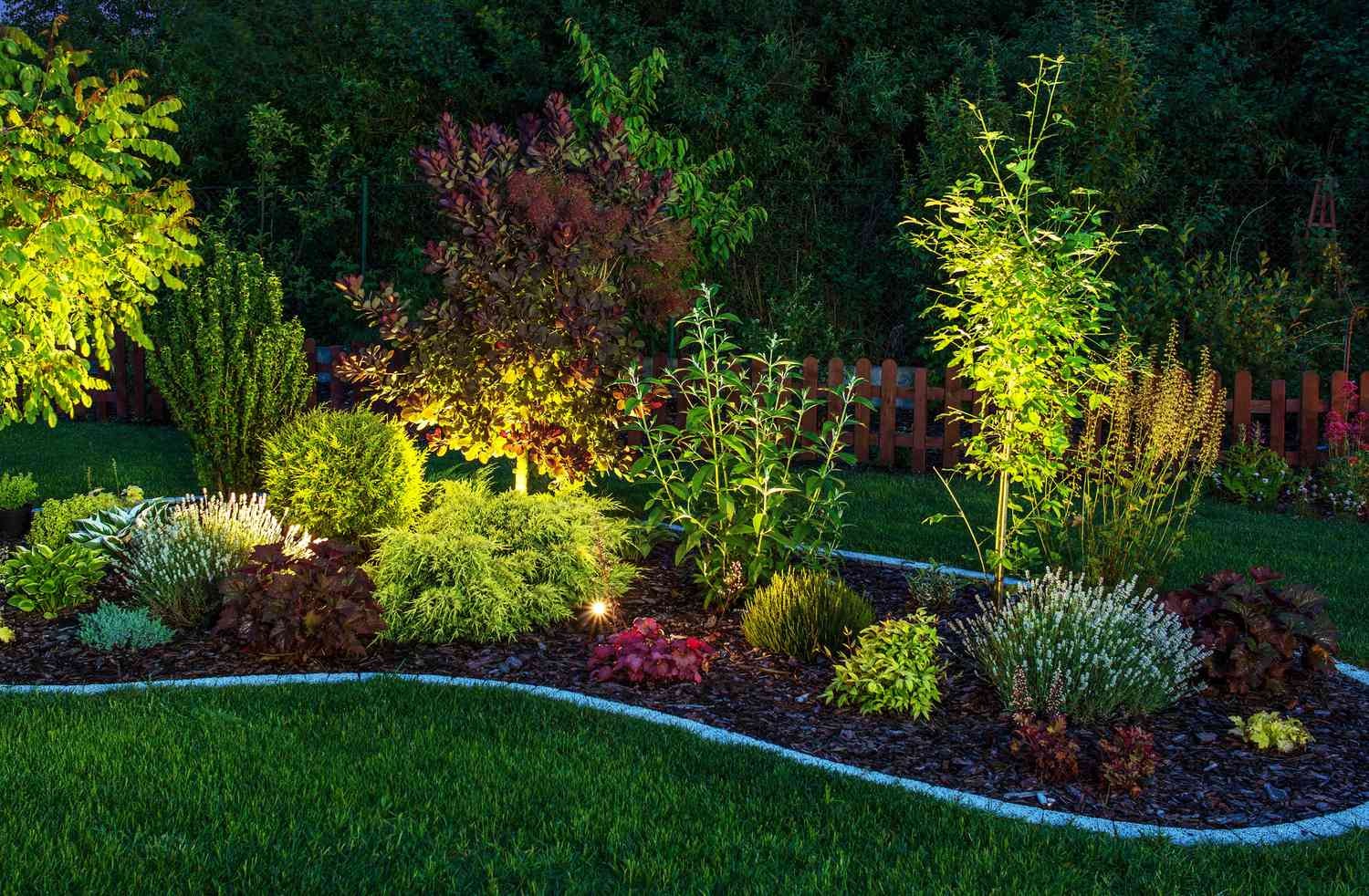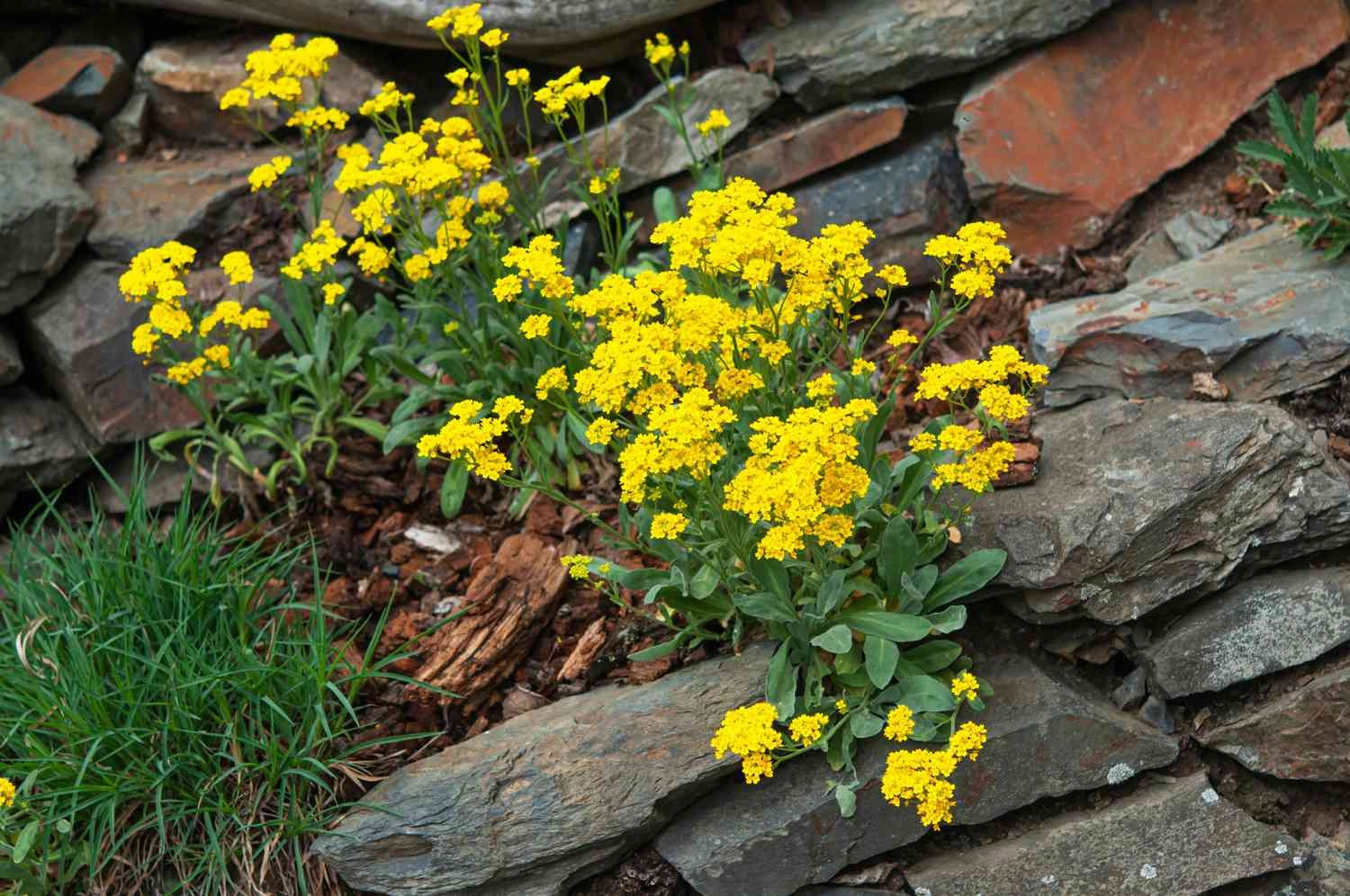The genus Abelia, known for its bright foliage and long flowering periods, consists of about 30 species of deciduous and evergreen shrubs. There has been much discussion about the genus Abelia itself, as modern DNA testing has proven that some previously recognized representatives of this genus differ significantly. Various horticultural experts recognize different nomenclature structures, either by reducing the size of the genus Abelia or by reclassifying these species as members of the genus Linnea 1.
There are several common identifiers for shrubs commonly called abellias. These shrubs have pointed oval-shaped leaves, often yellow or green with pink, orange, bronze or burgundy details. Some of them are multicolored or variegated and even change color depending on the season. Their flowers are tubular, they can often be seen white, pink or yellow. Unlike many flowering plants, abelia shrubs have a long flowering season, which lasts from spring to autumn.
- Common Name Abelia
- The Botanical Name Is Abelia
- Family Caprifoliaceae
- Plant type shrub
- Mature height 2-10 feet. tall, 2-8 ft. wide
- Full and partial sun exposure
- The soil type is loamy, moist, but well drained
- Acidic soil pH, neutral
- Flowering Spring, Summer, Autumn
- flower color pink, yellow, white
- Plant resistance zones 4-11, USA
- Region of origin Asia
Abelia’s Care
After rooting, abelia plants are extremely easy to care for and require very little maintenance. Nevertheless, they reward the gardener with an abundance of flowers and visual interest with their colorful foliage and a long flowering period. Their bright foliage often changes color during the growing season, and their long-lasting flowers attract hummingbirds, butterflies and other pollinators. These plants are rarely affected by pests and ailments, although powdery mildew, anthracnose and aphids can cause problems.
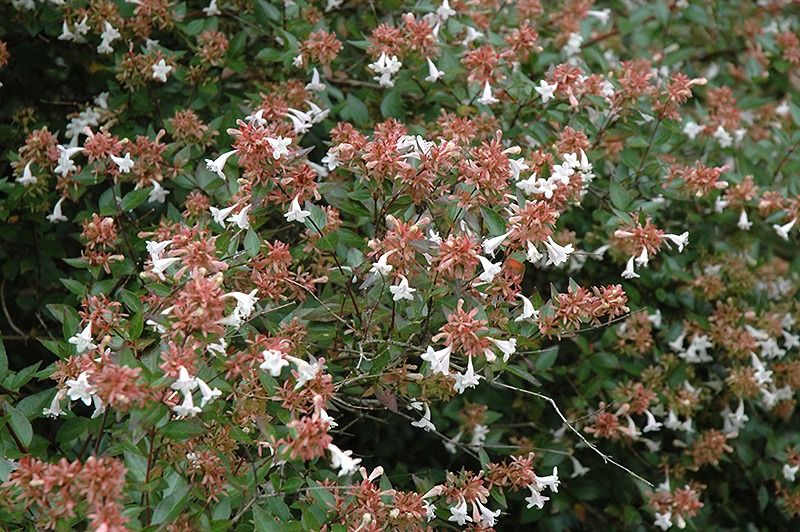
It is best to plant these bushes in early spring or early autumn, when the temperature is moderate. Choose a place with plenty of sunlight and rich, well-drained soil. Plant the abelia in a hole that is twice as wide as the root structure and allows the top of the root system to rise slightly above the soil.
Light
Abelia can be grown both in full sun and in partial shade. However, planting them in the open sun will contribute to a brighter foliage color and healthy flowering. Plants grown in areas with strong summer heat will benefit from a little daytime shading.
Solution
Although abelia plants grow well in fertile, well-drained and moist soil, they tolerate different soil conditions. It is recommended to add compost to the soil before planting, as these plants feel better in soil rich in organic substances. The pH level of the soil should be slightly acidic for optimal growth.
Water
These plants, which do not require special care, are resistant to drought after rooting. However, they feel best with regular watering. Especially during the hottest summer months, you should plan to water the abellias once or twice a week so that they remain vigorous and healthy. Let the soil dry before watering again. For abelia, it is better to water deeply and rarely than to water lightly and regularly.
Temperature and humidity
Abelia plants can be grown in a variety of climatic conditions, from USDA resistance zones 4 to 11. Preferred growing areas depend on the specific needs of each variety.
Fertilizer
Abelia shrubs benefit from soil rich in organic matter. Add compost every year to provide the necessary nutrients and promote good soil drainage. In addition, providing the plant with slow-release shrub fertilizers in early spring will give abelia the necessary impetus for further growth over the next year.
Types of Abelia
Diamond Abelia (Abelia × grandiflora): This popular variety can be grown in a variety of regions, from cold to warm. Its glossy foliage has semi-evergreen foliage in colder regions, while providing persistent evergreen foliage in warmer regions.
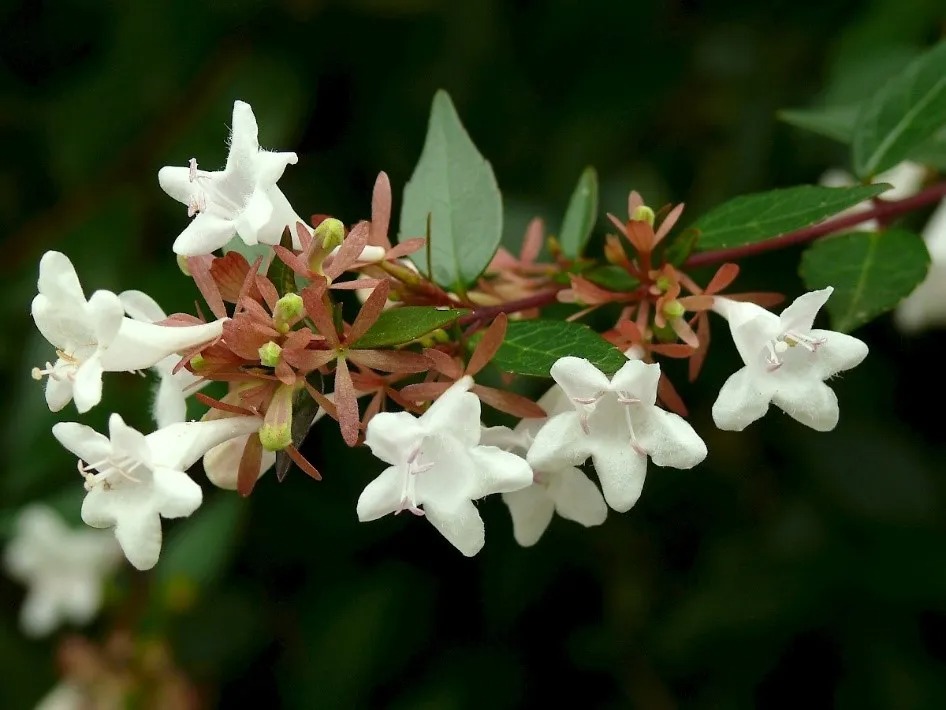
‘Kaleidoscope’ abelia: This popular dwarf variety is known for its bright foliage, which changes color depending on the time of year. Its variegated foliage appears yellow in spring and turns bright orange-red in autumn. During the flowering period, this is complemented by small white flowers.
‘Rose Creek’ abelia(Abelia x chinensis): this variety is known for its unique color combinations. It has glossy green leaves that turn bronze in autumn, and the flowers range from pink to white. These interesting color changes are complemented by dark red branches.
Carve out
Periodic pruning will help keep the abelia bushes clean and growing. It is best to prune in after winter or early spring to avoid pruning new shoots or flower buds. Remove all damaged or dead branches and trim the plant to the desired shape. Take no more than a third of the bush. Some varieties produce long thin shoots from the trunk or branches that can be removed for a neater appearance. Other varieties bloom on old wood, so pruning is best done after flowering.
Reproduction of Abelia
Reproduction of abelia can be carried out by cuttings of both deciduous and coniferous species. Although hardwood cuttings are often more stable than conifers, they do not take root as easily as softwood cuttings. Coniferous cuttings are harvested in spring, and deciduous cuttings are harvested in autumn. Both are looked after the same way. To grow any of the options, you will need sharp scissors, a small pot, well-drained, rich soil and a rooting hormone. Then follow these steps:
- Using sharp scissors, cut a small branch about 6 inches long. Cut under the knot.
- Remove all the lower leaves.
- Dip the cut end into the root hormone, then gently plant it in rich, well-drained soil.
- Put the pot in a warm sunny place. Keep the soil moist.
- The roots should form in about one to two months.
How to grow abelia from seeds
Abelia can also be grown from seeds, but it is important to know that plants that will differ from the mother will grow from the collected seeds. Some varieties, such as glossy abelia, are infertile and do not produce seeds at all. To get an identical copy of the mother plant, it is necessary to take cuttings. If you are not concerned about a plant with slightly different flowers, aroma or color, growing abelia plants from seeds is a useful process. You will need a sunny place, moist, rich soil and small pots if you want to grow them indoors. To grow them indoors, follow these instructions:

- Fill small pots with rich, moist, well-drained soil.
- Plant a few seeds in each pot, gently pressing them into the soil.
- Put the pots in a sunny, warm place and keep the soil moist.
- Germination should occur within a few weeks.
- Once the seedlings have grown to a few inches in height, temper them outdoors until they are ready for planting in the garden.
To grow abelia seeds outdoors, follow these instructions:
- Choose a sunny spot in your garden. Scatter the seeds over rich, moist, well-drained soil in spring, when the browbeat of frost disappears. Depending on your soil, it may be better to put compost in the soil before planting.
- Keep the soil moist, water regularly.
- Germination should occur within a few weeks.
Transplant and transplant of abelia
Some abellias can grow quite large, while others remain compact. Small varieties, such as dwarf, are ideal for container gardens. Be sure to choose a pot with suitable drainage holes before planting abelia. It is best to choose a pot that will allow the plant to grow comfortably for several years before it has to be transplanted. To do this, take a container about 8 inches larger than the root system. Then add a lot of compost-rich soil, keep it moist and put the pot in a sunny place. If the plant is sticking out of the container, gently loosen the roots by tilting the plant to the side and patting the entire container. Remove the root system from the pot and plant in a new pot that provides a few inches of extra space on all sides. Fill it with rich soil and water it thoroughly.

